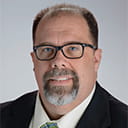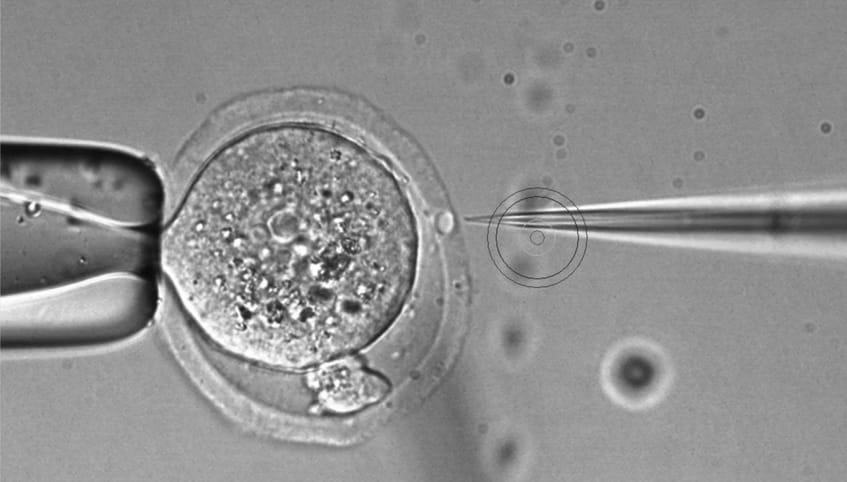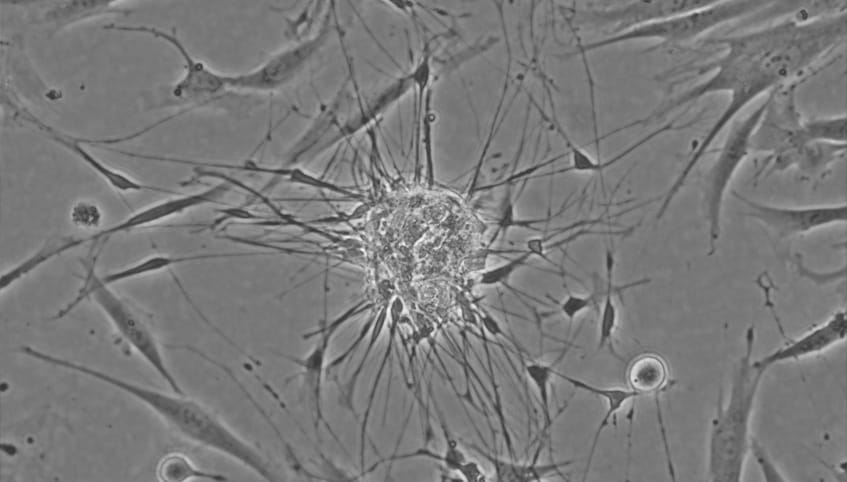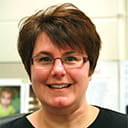- Home
- Research
- Shared Resources and Core Facilities
- Transgenic & Gene Targeting

The Transgenic and Gene Targeting Shared Resource (TGTSR) is an important shared resource providing centralized scientific and technical support for the design and production of novel transgenic and genome edited mice and genetically altered cell models, including cancer cell lines and pluripotent stem cells, for researchers at The University of Kansas Cancer Center.
The TGTSR has 4 aims:
To support these aims, the TGTSR provides the following services:
The complex etiology of tumor development and physiological responses to cancer and cancer therapeutics require the use of animal and cell models. As such, genetically altered mouse and cell models remain critical and essential tools for the researchers at the cancer center. The production and analysis of such models ultimately lead to better understanding of biological processes of tumorigenesis, as well as in vivo and in vitro models for therapeutic and biomarker discovery and validation.

The TGTSR provides comprehensive services to support the cancer center research related to genetic manipulation of the mouse and cell lines using state-of-the-art technologies, including genome editing via CRISPR/Cas9 tools. TGTSR staff provide the necessary technical expertise for the generation of novel strains of genetically engineered mice via embryo manipulation. The TGTSR also provides services for genome editing in a range of cultured cell types, including pluripotent stem cells and cancer cell lines. The TGTSR staff strive to develop and integrate new methods for generating genetically modified animal and cell models, and closely monitors new technologies in the rapidly evolving field of genome editing.
The TGTSR also provides a range of support services related to KUCC researcher studies involving genetically modified cell and animal models. These services include sperm and embryo cryopreservation services for long term storage of their unique models, and in vitro fertilization services to reconstitute animal models at a later date or for strain importation.
The TGTSR has dedicated laboratory space with specialized instruments at two sites (the University of Kansas Medical Center and Children’s Mercy) for molecular biology, cell culture, embryo manipulation, cryopreservation and animal housing to support studies using modified mouse and cell models.
TGTSR staff are available to partner with cancer center researchers on project design and grant applications by providing our expertise in mouse genetics, genome editing, as well as both animal and cell-based modeling of diseases.
[00:00:00] Hi, my name is Melissa Larson and I'm the co-director of the Transgenic and Gene Targeting shared resource of the KU Cancer Center.
“How does your shared resource support researchers?”
Our shared resource supports researchers in that we are willing to work with investigators on projects that might be out of our purview or out of our realm of published services. For instance, I have created a mouse model that I had to design a new protocol and the protocol was so new that I was able to publish with a book chapter with the investigator. We also support other non-standard or non-traditional services. If an investigator has an interest in pursuing an experiment that is outside.
“Can you give an example of when your shared resource contributed to a study with major scientific impact? How did you contribute?”
The third component we have is the Biopharmaceutical Innovation and Optimization Center. This is led by Dr. Mike Hageman, and this supports formulation in pharmacokinetics, pharmacodynamics in vivo, proof of concept experiments, as well as A DME experiments. And together we support the drug discovery, preclinical drug discovery needs of the researchers across the center.
So, one of the research programs that we are involved in and supported is a project with the Cancer Prevention Group. And in this, the Medicinal Core played a critical role in developing the analogs and also developing, characterizing the peptides that were [00:02:00] involved in the project.
“Why should researchers consider partnering with your shared resource on their next project?”
We are interested in supporting your research in any way that we are capable of doing so. At the KUMC site, we're beginning to explore offering the service of organoid development and culture. At the Children's Mercy site, we are providing services in surgery, which are not part of the standard repertoire of services that we offer otherwise, including Stereotaxic injections.
“How can researchers connect with you to initiate a project?”
The TGTSR has supported our research at multiple levels, including helping us generate CRISPR-KO breast cancer clones to explore important regulators of cell metabolism, as well as cryopreserve mouse lines used to characterize the relationship between metabolic health and cancer development. Kristy Brown, PhD
Co-leader of KU Cancer Center's Cancer Prevention and Control Research Program




Genetic engineering of non-standard mouse strains
In support of a collaborative effort funded by the Department of Defense to understand
T cell signaling in the tumor microenvironment, the TGTSR generated a novel genetically engineered mouse strain lacking a critical signaling molecule involved in this intercellular communication. This mouse model, generated by CRISPR genome editing, was developed in the NOD/ShiLtJ strain, a strain not typically used in genetic engineering. This method leverages the use of direct CRISPR-based genome editing in a range of non-standard mouse strains and avoids time-consuming backcrosses.
Pluripotent stem cell models of leukemia
The TGTSR has supported a highly innovative collaborative project using genetically engineered human-induced pluripotent stem cell models to model pediatric leukemia, with a focus on infant onset acute lymphoblastic leukemia (ALL). The TGTSR staff designed and generated a novel genetic engineered iPS cell line via CRISPR-mediated genome editing carrying an inducible oncogenic driver of pediatric ALL. The TGTSR also supported in vitro differentiation of these cells to hematopoietic lineages for analysis by the research team. This study, supported by Braden’s Hope for the Cure, Noah’s Bandage Project and the Masonic Cancer Alliance, is using this cell-based model to understand the unique cellular evolution, genetic risk factors and therapeutic resistance associated with pediatric leukemia.
This resource is funded by The University of Kansas Cancer Center Support Grant (CCSG) awarded by the National Cancer Institute (P30 CA168524). Publications that have utilized facility resources, services or scientific data generated by the resource should acknowledge the resource and cite the NCI CCSG grant.
To apply, click here. Applications are accepted throughout the year. Contact Lisa Harlan-Williams at lharlan-williams@kumc.edu for more information regarding membership.